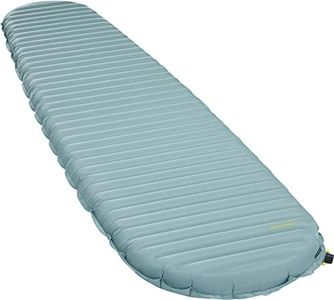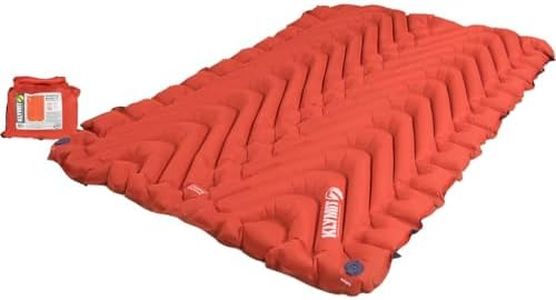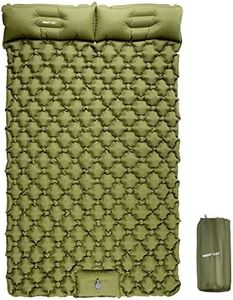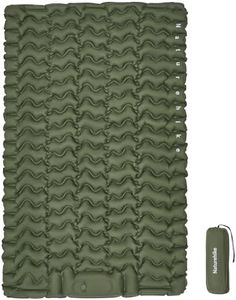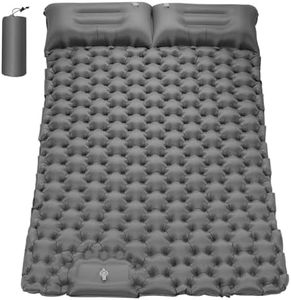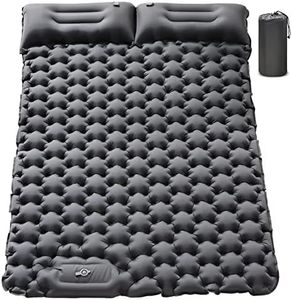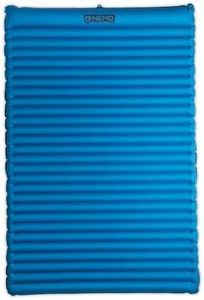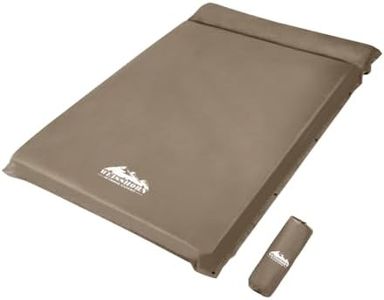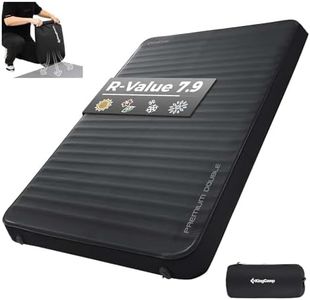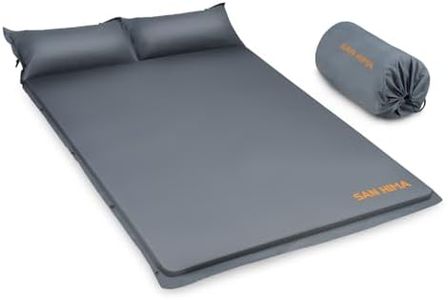We Use CookiesWe use cookies to enhance the security, performance,
functionality and for analytical and promotional activities. By continuing to browse this site you
are agreeing to our privacy policy
10 Best Double Sleeping Pads
From leading brands and best sellers available on the web.By clicking on a link to a third party's website, log data is shared with that third party.
Buying Guide for the Best Double Sleeping Pads
When choosing a double sleeping pad, you're looking for comfort and practicality for two people sleeping outdoors, whether for camping, hiking, or vanlife. The right pad can make a huge difference in how well you sleep, how easy it is to carry, and how well you stay warm. To pick the best double sleeping pad, focus on the key specs that affect comfort, insulation, size, weight, and ease of use. Understanding these features will help you find one that suits you and your partner’s needs—and ensures a good night’s rest in the wild.Thickness and CushioningThis spec measures how thick the sleeping pad is when inflated, and it’s important because it directly affects comfort and support. Thicker pads (around 3 inches or more) offer more cushioning and can help side-sleepers avoid feeling the ground, making them ideal for those who prioritize comfort. Thinner pads (often about 1–2 inches) are lighter and more compact, making them good for backpacking where saving space matters. If you tend to sleep on your side or are sensitive to hard surfaces, go for a thicker pad; for lightweight travel, a thinner one may suit you better.
Insulation and R-valueR-value indicates how well the pad insulates you from cold ground. This is crucial because even on chilly nights, losing heat to the ground can make you cold. R-values usually range from around 1 (for summer use) up to 5 or more (for winter use). If you camp mostly in warm weather, a lower R-value may be enough. For three-season or colder camping, look for R-values above 3 for better warmth. Consider when and where you'll use your pad—choose higher R-values if you might face cold conditions.
Dimensions and FitThis refers to the length and width of the sleeping pad, determining how much space you and your camping partner have. Larger dimensions offer more room but may be heavier and take up more tent space, while compact pads are lighter but could feel cramped for two adults. Measure your available tent floor space and check if you both fit comfortably on the pad size listed. For couples, ensure both people can lie side by side without falling off, taking into account height as well.
Weight and Packed SizeThe weight and packed size tell you how easy it is to carry the pad when it’s rolled or packed up. If you’ll be carrying the pad while hiking or backpacking, a lighter and more compressible pad is easier to fit in your pack. For car camping, weight and packed size are less critical, so bulkier pads can be acceptable. Choose a lightweight, packable model if you plan to move camp often or carry it long distances.
Inflation MethodThis tells you how the pad is inflated—whether by mouth, pump, or self-inflating design. Self-inflating pads are convenient but can be bulkier; manual inflation may save weight and space. Some pads come with built-in or separate pumps to make inflation easier. If you want quick and easy setup with minimal effort, look for a self-inflating pad. If you prioritize lighter weight and don’t mind extra setup time, manual inflation could work for you.
Material and DurabilityThis refers to the type of fabric and build quality of the pad, which affects how long it lasts and how resistant it is to punctures or abrasions. Stronger materials are more durable but may add a bit of weight. If you camp on rough ground or use the pad often, sturdier material is a smart choice. For occasional use on soft grass, lighter fabrics are fine. Always consider how and where you'll use the pad to decide how much durability you need.

